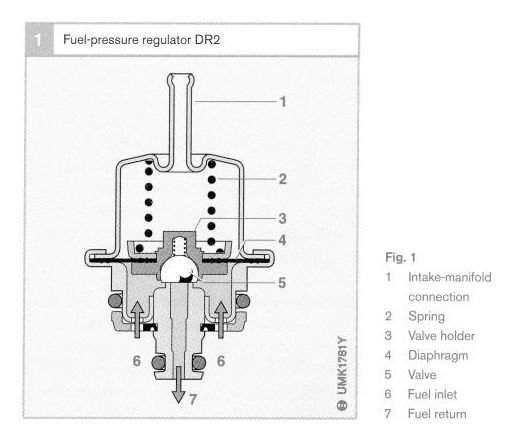- Joined
- Dec 25, 2002
- Location
- mont, AL
You need to check it with vacuum on once you've set it guys; so you might as well set it under the conditions it will see when it's running. And while it may not generate a big difference, the regulator is going to behave a bit differently at 200F than it will at 80F.
You don't have to have the engine running to set base timing either -- but if you've got a timing light, you're better off using it to set the timing with the car running. Same deal with fuel pressure. You don't have to have it running -- but it's a better standard procedure.
what? the stock system runs a 3 bar pressure regulator, which is 3 bar with no input on the vacuum diaphragm. It doesn't matter if the engine is running or not with the vacuum unhooked, it should be 3 bar.
greenbook said:the greenbooks say 2,8-3,2 bar on shutted engine and 0,5bar less on idling
The only thing you're looking for with it running and hooked up is that the pressure is lower than the base 3 bar setting.
Why are you complicating this procedure? this is nothing like setting ignition timing with the engine off (the closest thing it is to timing would be akin to locking out any ignition advance while the car is idling and setting base timing there. your other suggestion might as well read "well you need to set base timing at 3500 rpms since that's where the car will be most of the time" derrrrp).
even if the underhood temps are 200 degrees it is completely folly to even think that the fuel temperature is anywhere near that, and additionally a 1-2psi fluctuation in fuel pressure is going to manifest itself as...
drumroll please.....
nothing because it will see that much variation just in engine vacuum pulses.
in reality, with a 2.4 system the fine details don't matter much anyway. +- probably .5 bar, the car will behave the same after about a minute or two.
This is a simple procedure. Jump the fuel pumps with the engine off and set it to 3 bar, and be done. The only other thing that may need attention is if the fpr has an adjustable ramp (2:1 fuel pressure vs input pressure). Most inexpensive ones do not, so you set the base pressure, hook the vacuum line up, and move on to something else.


